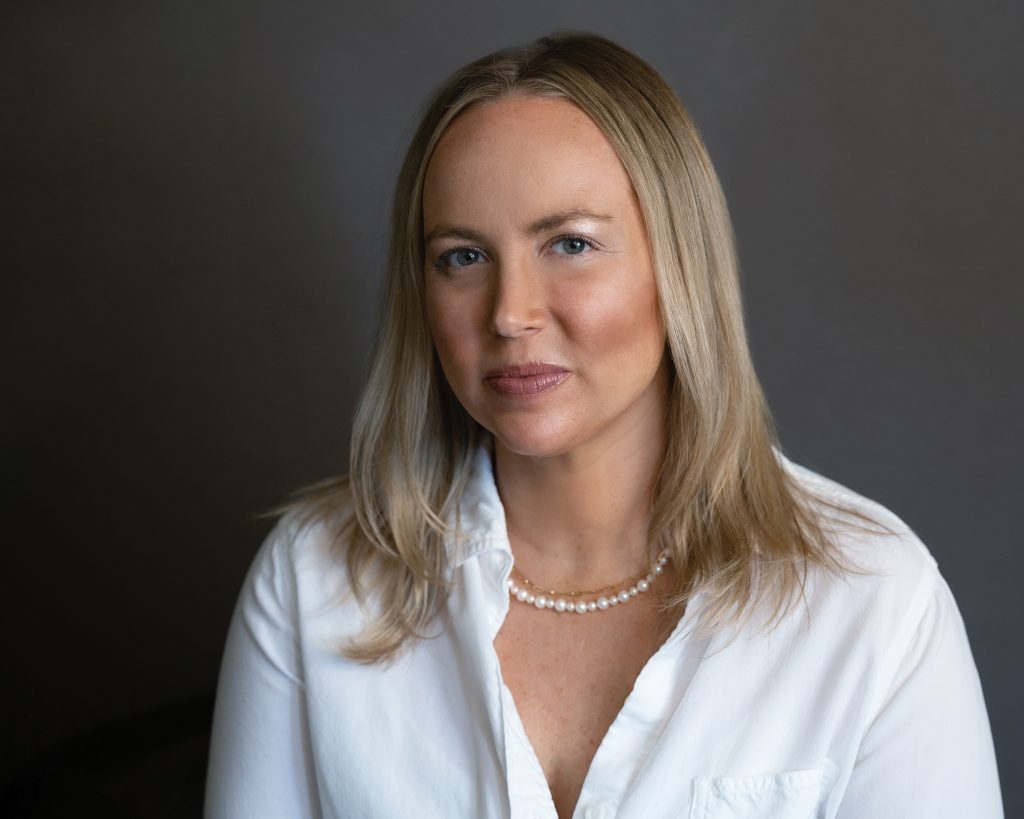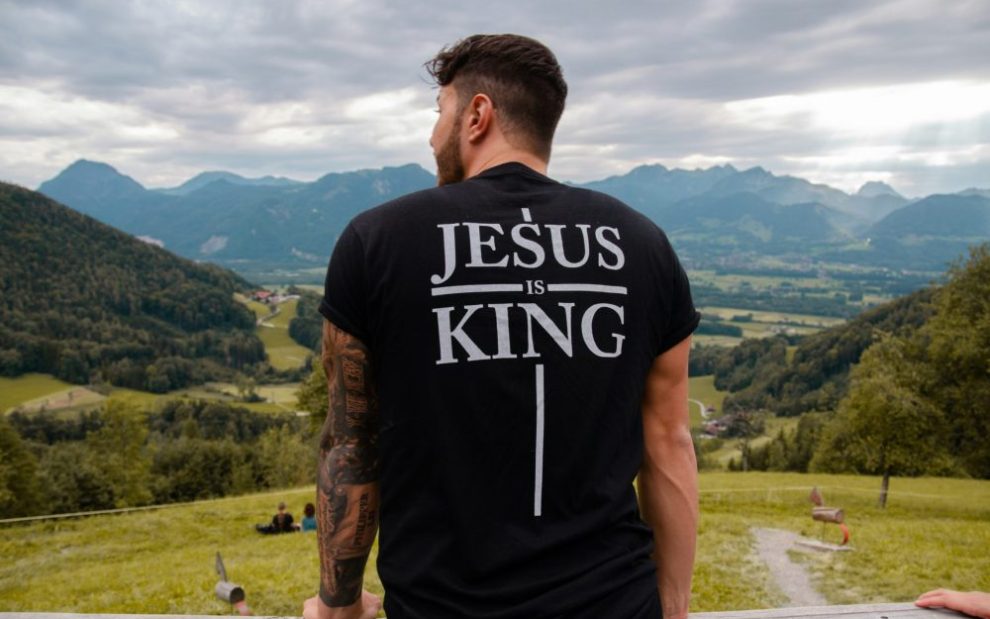
In 2022, David Brooks published a New York Times opinion column titled “The crisis of men and boys.” In it, he pointed out a range of issues affecting men and boys: declining educational outcomes, higher rates of suicide and substance abuse, and loneliness.
Brooks was not alone in his assessment: The past several years have seen a plethora of similar books, articles, and studies all aimed at how to help men out of their current situation. Despite the body of research, there’s no consensus on what is causing this crisis. According to an article in the New Yorker, some conservative authors blame feminism and a loss of masculinity, while other commentators suggest the problem is much more complex.
In her new book, Disciples of White Jesus: The Radicalization of American Boyhood (Broadleaf Books), Angela Denker argues that at the root of the masculinity crisis lies a warped understanding of male identity that is tangled up with a distortion of the Christian mission. From this false understanding of Christian masculinity, a false version of Jesus has arisen, one associated with dominance, violence, and white supremacy.
But, Denker says, dire though the situation is, it’s not hopeless. And we can all participate in creating a better culture, in part through the stories that we tell: “Only stories can make us reach for a common humanity far beyond the insecure, desperate, greedy, grasping hands of a fake white Jesus,” she says.
What is the “crisis of manhood” people keep talking about?
There’s a lot of catching up that we need to do when it comes to understanding masculinity. We’ve done a lot of work to expand our understanding of what it means to be a woman, to be feminine. But we haven’t paid attention to masculinity in the same way. Look at Disney heroines: We’ve expanded our understanding of what women or girls look like in Disney films, but we haven’t done the same with our ideas about men. We still have a lot of the same tropes around masculinity.
So many women are burnt out, trying to do everything, while men are floundering, looking for their identity in a world that’s changed but which largely still has a lot of the same expectations for them to be providers or heroes.
In your book you write that “men and boys are the problem” and that “men and boys are in trouble.” How are these two statements both true?
When we look at political understandings of masculinity, this idea that men and boys are the problem typically comes from the “left,” whereas the idea that men and boys are in trouble typically comes from the “right.”
As a mom to boys who’s married to a man and who has a brother, and as someone who exists in social situations with men, I think we need to pay attention to both these ideas. We can’t address the problems and struggles boys and men are having without also addressing the ways they’re being radicalized into violence. At the same time, we can’t address the violence young white men are committing toward other groups if we don’t also address their internal problems.
The whole world is skewed in favor of white men. So why are they in such a bad way?
Maybe some of it goes back to the capitalist structure itself, but the reality is, we all exist together in a world that does not necessarily foster human thriving and happiness. So if you look at the white men who really benefit from this patriarchal white supremacist power structure—men like Donald Trump or Elon Musk—these are not men who I would say are thriving. They’re not men who have healthy relationships. They have issues with the way they exist in their families. They certainly seem to have problems with how they see themselves in the world.
Even if we look at the men who supposedly have succeeded at these levels, they’re not examples of human thriving. I wouldn’t want my sons to have the life of Jeff Bezos, for example.
Traditional stereotypes say that men are more rational and less emotional than women. But you mention a study that says baby boys cry more than baby girls. Are men the more emotional ones after all?
It’s complicated. We need to think about what’s genetic and what’s a social construct. In my experience as a female pastor, I’ve noticed that if a man is in the pulpit and he cries, people respond to that differently than they would if he were a woman. In some ways, men have much more space to show emotion. But as a parent, I often find myself thinking I need to raise my boys to be tough, in ways that I might not automatically think of if I had a daughter. Yet I would certainly want any daughter to be tough, too.
We need to examine our assumptions about who is more emotional, because the idea that men are less emotional just doesn’t bear out. The next question is: At what age do boys learn to bury their natural emotions? In what ways do they learn to use emotion as a manipulation technique—which we certainly see among pastors, faith leaders, and politicians. Consider Brett Kavanaugh’s use of emotion in the Supreme Court hearings. I think all of that requires deeper study.
Shame is a powerful factor, too. If I ever cry in public, especially in a professional setting, I feel such a deep sense of shame. I think we need to look at how class plays into this for boys and men. I wonder if wealthy, educated men have more space to cry and to be emotional, while men who are struggling, living in poverty, and have less resources or education still aren’t getting the space to show emotion in healthy ways.
In the transition to a healthier understanding of masculinity, some boys are being lost. How is this different from conservative complaints that we are “leaving men behind” because of feminism?
It’s a lot like the conservative complaint that we’re leaving white people behind because of affirmative action—which has certainly gained traction in recent years and was held up by a recent decision from a very conservative Supreme Court majority. I think there is a real indictment to be made of shallow, surface-level attempts to do diversity, equity, and inclusion work among American institutions. There is sometimes this idea that if we have individuals from one group who are successful, we’ve done our DEI work.
That was weaponized and turned upside down during the Trump campaign, where he would promote a few individuals, whether women or people of color, and then say, “Well, we don’t have to think about these systemic issues anymore.” Now, during Trump’s presidency, DEI is under direct attack and assault, and we’ve lost an opportunity we had after George Floyd’s murder to have a national conversation on race and racism and to make some real legislative and social changes.
As corporations shed their DEI work, the onus is on individuals to go deeper and do a class and economic analysis of some of these issues and look beyond a surface-level perspective on race, class, and gender rather than just viewing people according to their group.
How does social media and influencer culture tie into gender expectations?
It’s absolutely huge. Many liberals refuse to acknowledge the legitimate reasons for some of the societal grievances that lead us into traditionalist cultures, including the social pressures on women and the financial pressures on parents when it comes to housing, food, and education. Then we get aspirational accounts that show women they can live in a beautiful space and cook good food and have enough time to take care of their families. (The unspoken part of these accounts is that this takes a tremendous amount of financial resources—like the popular account Ballerina Farm, whose spouse is an heir to JetBlue.) But this is also connected to a biblical worldview that promotes “traditional gender roles.”
Among men and boys, algorithms rule. So much of this begins on YouTube, which tends to be a very cynical culture, a culture of mockery. A lot of young men, even some I know in my own life, start watching these manosphere accounts or accounts about being an alpha male because they think they’re funny. But because they keep watching, even just to mock it, the algorithm keeps serving it up, and over time it seeps into their worldview.
During COVID-19, all these young boys were at home doing school instead of out in the world interacting with people. And there was just this explosion of manosphere content, specifically on YouTube, with no counterprogramming or acknowledgment of what was happening. I think we’re continuing to see the fruits of that. This is also the outcome of parents working more and more hours and the high costs of child care; devices are playing different roles in families than they used to. All of this gives these accounts a megaphone, and we’re still looking for an alternative to that powerful messaging.
You mention in your book that many of these young men are very fixated on abortion as part of their culture war stance on the world. Why do you think this is?
This group of men and boys, who are questioning their own place in the world, for whom equality feels like discrimination, are looking for any way to reassert themselves at the top of the pyramid. And what results is a surface-level critique of real issues that don’t get to the real problems.
Some of this is based in reality. It’s not all in their heads. We have more and more women graduating from college and graduate school. We have more and more women who are the primary earners in their families. These are real things that are happening.
And so men and boys try to grasp for reassertion of male power, but it’s coming out in gross, unhealthy ways, and it’s being enhanced by people who claim to care about men and boys, but really what they care about is making money. And people have found that there’s a lot of funding for anti-abortion efforts.
How do our theologies and images of God factor into these issues?
Our images of God and Jesus specifically impact men and boys. And this is a huge part of the conversation that national and secular media often miss: the role of theology (our view of God) and Christology (our view of Jesus). Even if someone doesn’t go to church, isn’t a person of faith, or has left religion, they still have a certain view of God—perhaps as domineering, violent, and capricious. That view of God is connected to ideas about fatherhood, too. Sometimes even when someone has rejected that view of God, it remains. We are living in a world dominated by those paradigms.
If we view God as punisher, unfair, or unequal, that influences how we view everything else in the world. People with this mindset are going to go into the world being suspicious, prone to think of themselves as being victimized and that everyone else is out to get them. And we see that worldview all over in American politics.
If we look at right-wing Christianity in recent decades and how that impacts masculinity and young men and boys specifically, what we see is a rejection of trinitarian theology and a rejection of a relational God. Instead, there’s this understanding of relationships of subordinates—from God to Jesus to us. Hierarchy is important in this worldview. It’s really a failure of the church to faithfully communicate orthodox trinitarian theology to American Christians.
Who is “White Jesus”? What is the significance of this image of Jesus?
My book was initially going to be called Our Boys. But I noticed that when I talked to people about the book, they would often ask me: Are you going to write about White Jesus? And I noticed that in American Christian imagery, depicting Jesus as white and as masculine are both important.
The idea that we need to look beyond shallow understandings of diversity, equity, and inclusion relates to this topic and to understanding who White Jesus appeals to, because White Jesus does sometimes appeal to men who would not be socially stratified as white—think, for example of Hispanic men and the role of machismo.
This also connects to the white supremacist history in this country and the benefits that go along with being seen as white. Even when we look back at European Christianity, we see this privileging of European Christians. When I speak to church groups today, people just take for granted that America is specifically chosen by God and that white American Christians are somehow at the center of the Bible, when, of course, we’re not.
Does White Jesus have anything in common with the real Jesus?
I don’t think so. I think if you list every attribute of Jesus of the Bible and then list its opposite, you will have a complete description of White Jesus.
We’re living in this very Orwellian time where the same words are being used to convey opposite meanings, so we have this purported use of Jesus to support a movement that is hollowing out support for poor people and creating a society that’s reliant on violence, that looks out for itself rather than putting others first. Affiliating this movement with a God who sacrificed Godself and died in protest of a movement like this is just the ultimate gaslighting.
The way conservatives use the term religious freedom as an excuse to discriminate reminds me of this idea that the Civil War was fought over states’ rights, not slavery. Continuing to break down what words really mean is important.
The church ought to be a place where young men can find a healthy way to live. Is this happening?
In some cases, yes. I was in rural Minnesota and saw pastors having confirmation groups meet in their garages. One of them is a military veteran, and he was talking about an expanded understanding of who Jesus is—that Jesus is not a warrior. Because of his own record of military service and the scars he carries with him, he wants to expand the view of Jesus that these boys and young men have. So, I don’t want to say it’s not happening. I want to lift up the places and the people in small-town churches who are pushing back, because they’re often outmatched by the algorithms.
But the Christian Right has this whole media ecosystem. Instead of figuring out how to care emotionally for young boys and men, it’s radicalizing them. For example, if you’re a small-town church leader who’s looking to connect with young boys and men, and you go online looking for a curriculum to teach them about sex, you find a lot of material that is very extreme and very far right—that is looking to demonize LGBTQ+ people. But it’s readily available, and it’s cheap; wealthy donors have a vested interest in moving the country farther right, because the farther right it moves the more power they have.
You talk about the importance of stories. Why are stories so important?
Stories move opinions; stories shape communities. As a pastor, I have dedicated my life to believing in a story—the gospel story. And I think stories communicate truth in a much more powerful way than statistics or theories do. Stories are our most powerful means of communicating truth. It’s important to tell alternative stories to counter the very powerful storytelling from the far right.
What are some other things we can do to address this crisis?
This advice is seemingly simple, but pay attention to what kids are doing online and when they’re watching YouTube. It drives my 9-year-old crazy, but I’m constantly saying, “Hey, what are you watching? Tell me about it. What are you hearing?” Just having those meaningful conversations can help.
If there’s one central message to all the work and writing I want to do, it is to talk about this within your own families. This has been a challenge with so much Christian parenting advice, because there’s this idea that if we don’t talk about something—whether sex, gender, sexuality, politics, violence, or whatever—it won’t exist. That’s certainly how I grew up.
But the truth is that your kids are hearing about all this stuff elsewhere. They’re hearing about it online and from their peers. And if you never bring up these difficult topics, then you’re really abandoning the central role you have as a parent, a grandparent, a coach, or someone who your child trusts.
I think parents also have a role in building trust between kids and other adults. There’s so much messaging parents get, especially mothers, that you are the most important person for your kids. But alongside you having these conversations with your kids, it’s also important to recognize and help your kid build trust with others who can help provide them with alternative visions for what adulthood looks like and what healthy human thriving looks like. This will prevent them from developing these unhealthy archetypes of men they see online and thinking this is what they should strive for.
Kids get this glorification of wealth, both from YouTube and from Christian leaders. Especially in rural areas across the United States, this idea has unparalleled influence among Christian leaders. And the influence that celebrity leaders have far outpaces that of your local parish priest. We have to rebuild locally before any of this gets addressed.
This article also appears in the May 2025 issue of U.S. Catholic (Vol. 90, No. 5, pages 20-24). Click here to subscribe to the magazine.
Image: Unsplash/Savannah W.














Add comment